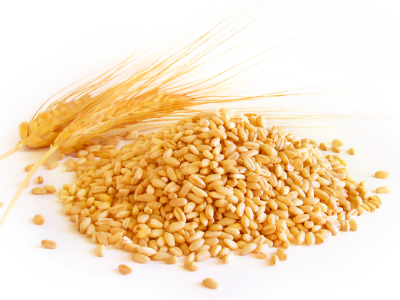It’s common knowledge that we should eat more grains for a healthy diet. Just what is the difference between whole grain and whole wheat? There are a lot of different terms floating around, it’s easy to get confused. Find out the meanings behind these terms to help you determine which is better when comparing whole grain vs. whole wheat.
What Is a Grain?
A freshly picked grain has three parts:
- The outer layer is called the bran. This is a shield to protect the rest of the grain. This part of the grain has fiber as well as vitamins and minerals.
- The middle layer is called the endosperm. Refined flours are usually made from this. It contains carbohydrates, protein and B vitamins.
- The innermost layer is called the germ. The germ has a number of nutrients contained inside like antioxidants, healthy fats, and vitamin E.

Whole Grain vs. Whole Wheat
|
|
Whole Grain |
Whole Wheat |
|
Made from |
Bran, germ, and endosperm |
Crushed wheat grain |
|
Type |
Whole grain wheat, oat, barley, corn, rice, rye, and other cereal grains |
Common wheat, durum, einkorn, emmer, and spelt |
|
Nutrients |
Antioxidants, vitamins, minerals, carbohydrates, and dietary fiber |
Fiber, magnesium and manganese (from unrefined whole wheat) |
|
Uses and Recipes |
Either germinated to be used as sprouts or in the form of crushed or powdered flours |
Powdered flour for making bread, germinated to make malt, used as crushed or cracked wheat, or processed to make pastas |
Whole Wheat
 Whole wheat is exactly what it sounds like. It contains all three parts of the grain. FDA regulations for listing a product as whole wheat say that the product must have all three of the wheat components in equal ratios that naturally occur in a wheat grain. Whole wheat does have beneficial fiber and other nutrients but it also contains gluten.
Whole wheat is exactly what it sounds like. It contains all three parts of the grain. FDA regulations for listing a product as whole wheat say that the product must have all three of the wheat components in equal ratios that naturally occur in a wheat grain. Whole wheat does have beneficial fiber and other nutrients but it also contains gluten.
Whole wheat is just a type of whole grain.Other grains that are whole grain include: brown rice, buckwheat, barley, corn, quinoa, rye, oats, millet, sorghum, amaranth, and wild rice. Wheat comes in the forms of spelt, bulgur, wheat berries, and faro.
Whole Grain
 According to the FDA, a whole grain is one that retains its basic form with all key components intact after the milling process. A product may be considered whole grain if at least 51% of its grain is whole. The structure of the grain along with the balance of vitamins, minerals, and phytochemicals has beneficial effects. Products made from the same ingredients in their refined form do not retain the same benefits.
According to the FDA, a whole grain is one that retains its basic form with all key components intact after the milling process. A product may be considered whole grain if at least 51% of its grain is whole. The structure of the grain along with the balance of vitamins, minerals, and phytochemicals has beneficial effects. Products made from the same ingredients in their refined form do not retain the same benefits.
A label of 100% whole grain means that a product contains at least one full serving or whole grain per serving as well as ensuring that all the grain in the product is whole. That is what you should look for when you shop.
Research has shown that eating whole grain helps you live longer, makes you stay fuller longer, and lowers bad cholesterol. It can also decrease the risk of diabetes by as much as 30%.
Which Is Healthier When Choosing Your Bread?
So how does whole grain vs. whole wheat stack up in buying your bread?
They have roughly the same nutritional values because being whole means the bread was made by use of the entire kernel but regular whole wheat bread is in the same place on the glycemic index as white bread. This is not good news if you have diabetes, are pre diabetic, or glucose intolerant.
Comparatively, research has found that the glycemic index of 100% whole grain bread compared to white bread is much lower. It actually has the lowest index in the category with 30-40% less than white bread. The more whole grains in the bread, the lower the glycemic index. For some real numbers: whole wheat bread is a 92 on the glycemic index compared to 69 in 75% whole grain bread. Bread made from 80% whole barley flour is a 95; whole bread consisting of 80% whole barley grains is a 57.
Identifying Whole Grain and Whole Wheat on Food Labels
Look at the big flashy labels first. These will often tell you if the product is 100% whole grain or an “excellent source of whole grain”.
Trying to add more grains to your diet? Go right to the ingredients list. Look for grains listed as whole, if they are close to the top of the list the product is probably a good choice.
It is becoming more common for products to indicate the number of grams of whole grains in the product. This makes the whole grain vs. whole wheat distinction while shopping a little easier to spot, but not all products are labeled like this and it will take more time before this method is more widely used.
What About Multigrain vs. Whole Grain?
According to Mayoclinic:

